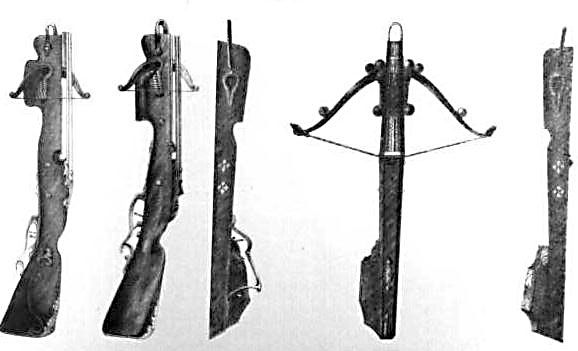| |
Crossbow.Samostrel in Russian.
Radziwil's Chronicle (dated 1159) was the first one which mentioned the
crossbow's use in Russia. This weapon, while considerably inferior to the bow
with respect to rate of fire (archers launched approximately 10 arrows per
minute, the arbaletnik only one or two), exceeded it with respect to
destructive power of the arrow and close grouping of shots. The bolt managed to
pierce heavy armor at considerable distance. The crossbow consisted of a wooden
stock, which usually ended in a butt. There was a longitudinal groove along the
stock, and the short arrow, "bolt", was inserted into it. On the
opposite end of the stock, a short, and extremely powerful bow was attached. It
was made of steel, wood, or horn. To charge the crossbow, the crossbowman set
his leg against a stirrup and drew the bow-string back, fastening it with a
hook, called a "nut". When shooting, a bent lever slid out of the
hollow of the nut. The latter turning around, released the bow string and the
bolt coupled with it. The string of the early models of crossbows was drawn
back by hand. From the second half of the 12th century the waist hook came into
use. By means of that device, the crossbowman, straightening his body, pulled
the string up to the nut. In the 13th century, crossbows were charged by means
of a brace. It is worth mentioning that the most ancient European waist-hook
was found during the excavation of Iziaslavl (in the Volyina area).
|
|


